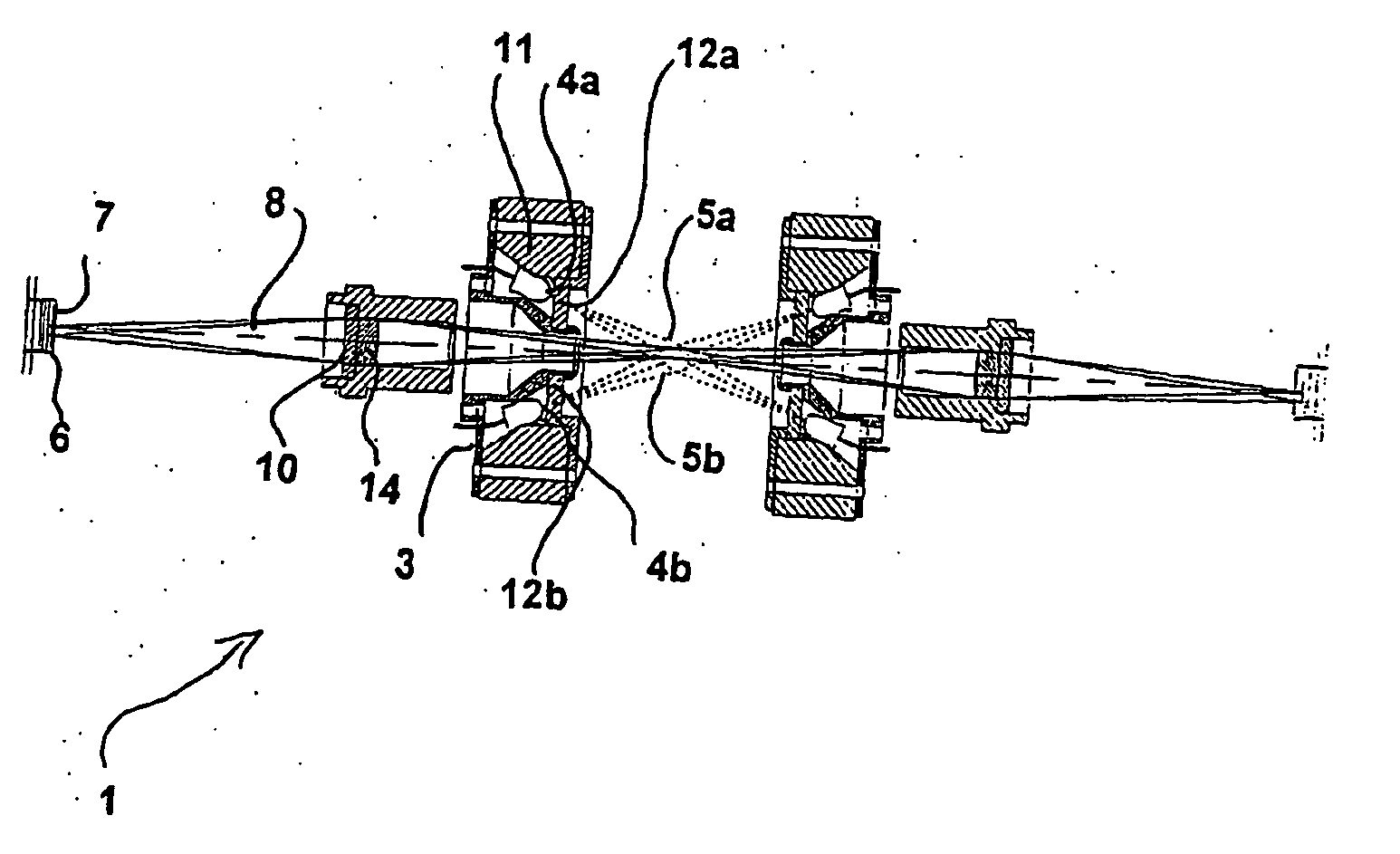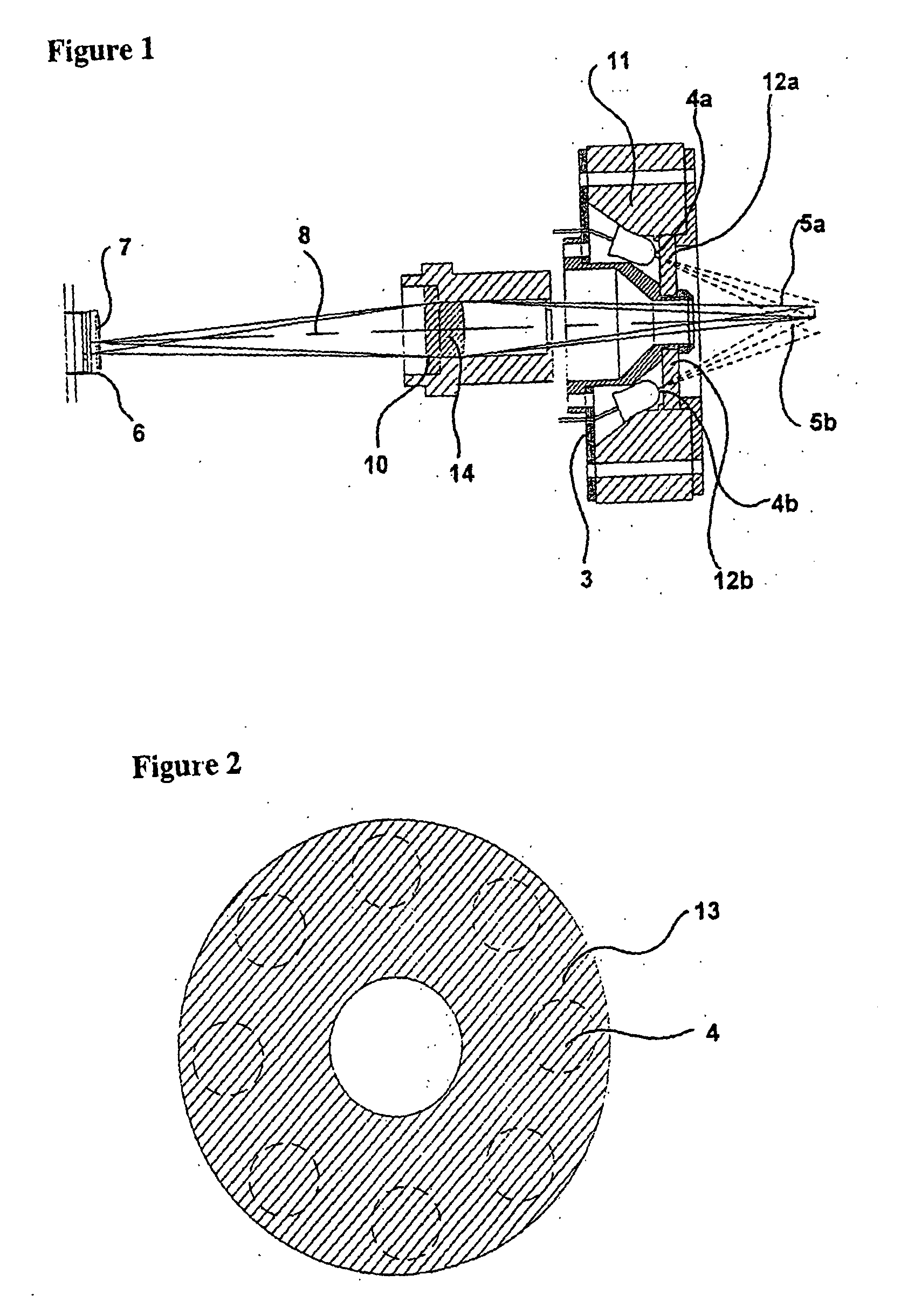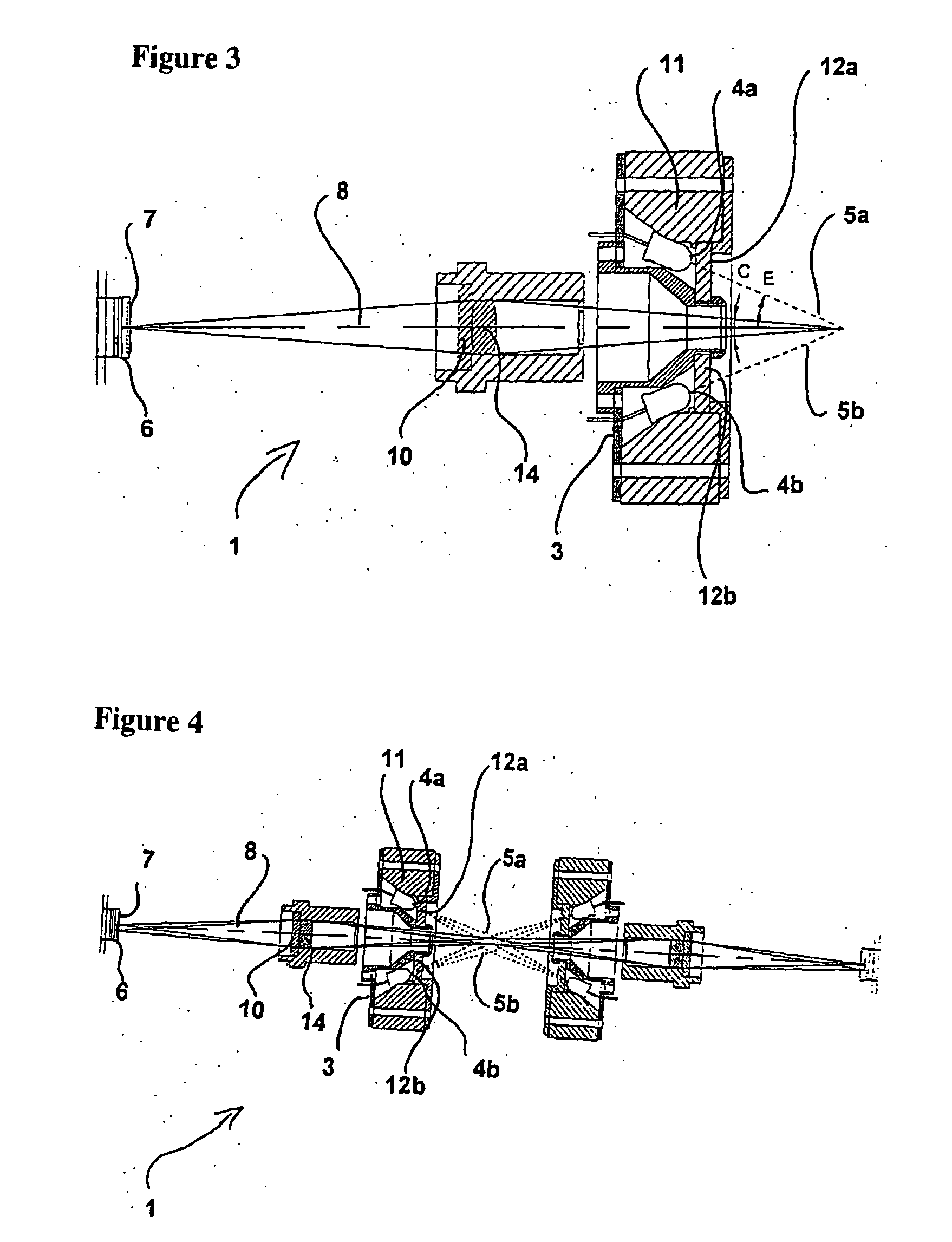Method and a system for detecting and optinally isolating a rare event particle
a rare event particle and rare event technology, applied in the field of rare event particle detection and optional collection, can solve the problems of low signal/noise ratio, reference does not address, and the time used for detection of signal from a particle in the sample liquid is extremely short, so as to achieve the effect of increasing the signal to noise ratio and substantially increasing the time used for detection of signal
- Summary
- Abstract
- Description
- Claims
- Application Information
AI Technical Summary
Benefits of technology
Problems solved by technology
Method used
Image
Examples
example 1a
A System Suitable for the Detection and Assessment of Rare Particles
[0303] A system suited for the detection and assessment of rare particles, based on the interaction of electromagnetic radiation with the particles, such as absorption or fluorescence is illustrated schematically in FIG. 9.
[0304] The figure illustrates a system, where the sample 901 is added to a sampling compartment and mixed with reagent 903, preferably where the volume of the reagent is controlled with a pump 904 capable of substantially precisely measuring a predetermined volume of the reagent.
[0305] After mixing the sample / reagent mixture is transported into the detection unit 907 by the use of a pump 909. The counting unit is illustrated schematically in FIG. 8.
[0306]FIG. 8 illustrates many of the important units and / or operations of a detection unit 801. Most of the controlling of the counting unit, and preferably means to perform analysis of the spatial image are located in the main control unit 802. The...
example 1b
System for the Detection and Assessment of Rare Particles
[0311]FIG. 14 illustrates a suitable optical system for performing such analyses within the detection unit 907. 1401 is a CCD that captures the image. 1402 is an achromatic glass lenses used for imaging the volume inside the sample compartment to the CCD. The position of the lenses along the optical axis determines the transversal magnification and is used for focusing the system. 1403 is an aperture. 1404 is a glass emission absorbance filter, allowing substantially only red fluorescent light to pass. 1405 is the sample compartment being in close proximity to the optical system object plane. 1406 is the glass excitation interference and absorbance filter, allowing substantially only green excitation light to pass. 1407 is the Light Emitting Diodes (LED) working as a light source in the optical system emitting green light at the wavelength of around 530 nm.
[0312] The volume of sample for each measurement is approximately 3 μ...
example 2
Comparison of the Performance of a System According to the Present Invention and a Commercially Available System
[0318] 10 samples of leukodepleted Red Blood cell units (SAGM blood units), prepared from human blood were analysed with a method according to the present invention and the results compared to a commercially available method suitable for the analysis.
[0319] For the measurement by a method according to the present invention a volume of 300 μl of the sample was added to 150 μl reagent. The reagent consisted of Propidium iodide (25 μg / ml), Triton X-100 (1.5% w / w) and polymer surfactants Pluronic (1.0% w / w) dissolved in water. The sample reagent solution was mixed by pipetting prior to analysing in the detection unit. A total of 20 images were analysed and the number of observed rare particles were thus counted in a volume corresponding to approximately 20 μl of the initial sample. This analysis were carried out twice rendering duplicate results for each sample with the syst...
PUM
 Login to View More
Login to View More Abstract
Description
Claims
Application Information
 Login to View More
Login to View More - Generate Ideas
- Intellectual Property
- Life Sciences
- Materials
- Tech Scout
- Unparalleled Data Quality
- Higher Quality Content
- 60% Fewer Hallucinations
Browse by: Latest US Patents, China's latest patents, Technical Efficacy Thesaurus, Application Domain, Technology Topic, Popular Technical Reports.
© 2025 PatSnap. All rights reserved.Legal|Privacy policy|Modern Slavery Act Transparency Statement|Sitemap|About US| Contact US: help@patsnap.com



